| |
2016 |
 Next Year
Previous Years Next Year
Previous Years
 |
|
|
| |
|
|
|
| |
Policies
and Practices 83
The Importance of Being
Siliguri, or the Lack Thereof Border-Effect and the "Untimely" City
in North Bengal
This monograph explores the possibility of certain
conceptualizations about the geo-imagination of north Bengal, from
the perspective of Siliguri, at a time when its ideational remit is
being expanded by statist defense neurosis as well as everyday
practices of mobile peoples. In retrospect, it raises a critical
question as whether in the context of changing geo-economies and
fluid borders, north Bengal can be re-visualized as more integrally
a part of the north-east, with its border economy and its
“travelling actors”, than as part of Bengal. It has been argued here
that the metro-polarities of Siliguri present a sort of “futuristic
archetype” of a border-city. Siliguri or the idea of it has been
understood and analyzed in abstraction, both in the Jungian and
Deleuzian sense.
Essay by
Atig Ghosh |
|
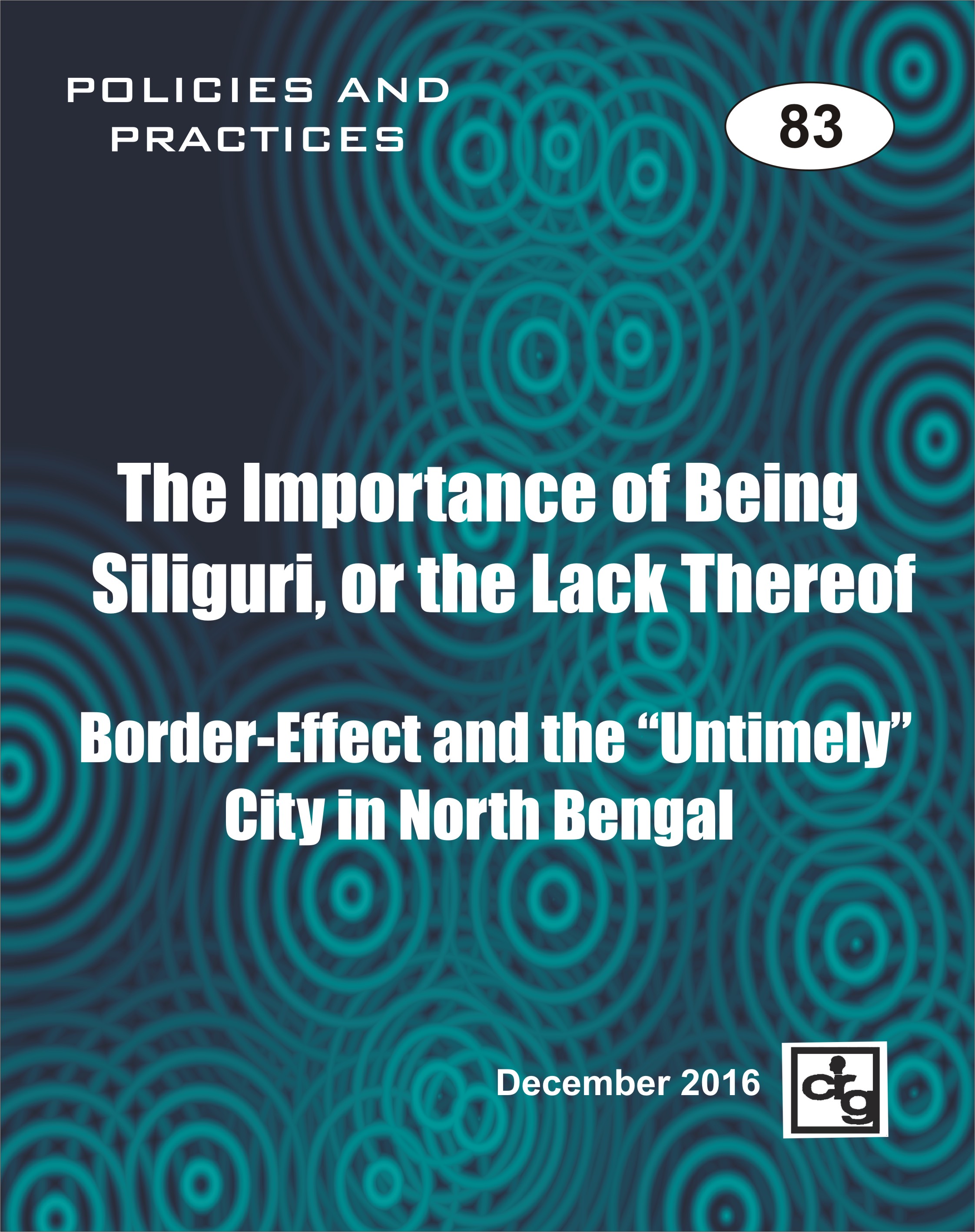 |
| |
|
|
|
| |
Policies
and Practices 82
People,
Politics and Protests III : Marxian Literary Debates and Discourses
The paper on Marxian aesthetics reflects the culture of debating and
discussing Marxist philosophy and politics in Bengal in the decades
after independence. The Bengali intellectuals based in Calcutta and
Dhaka had always been sympathetic to and informed about various
shades of left politics. They had engaged with Marxism both at the
levels of discourses and practices. Intense debates regarding
Marxian aesthetics have shaped the literary, cinematic and other art
forms in West Bengal in 50s, 60s and 70s when the politics of the
streets, factories and fields were being shaped by Communists of
different shades.
Essay by
Subhoranjan Dasgupta
|
|
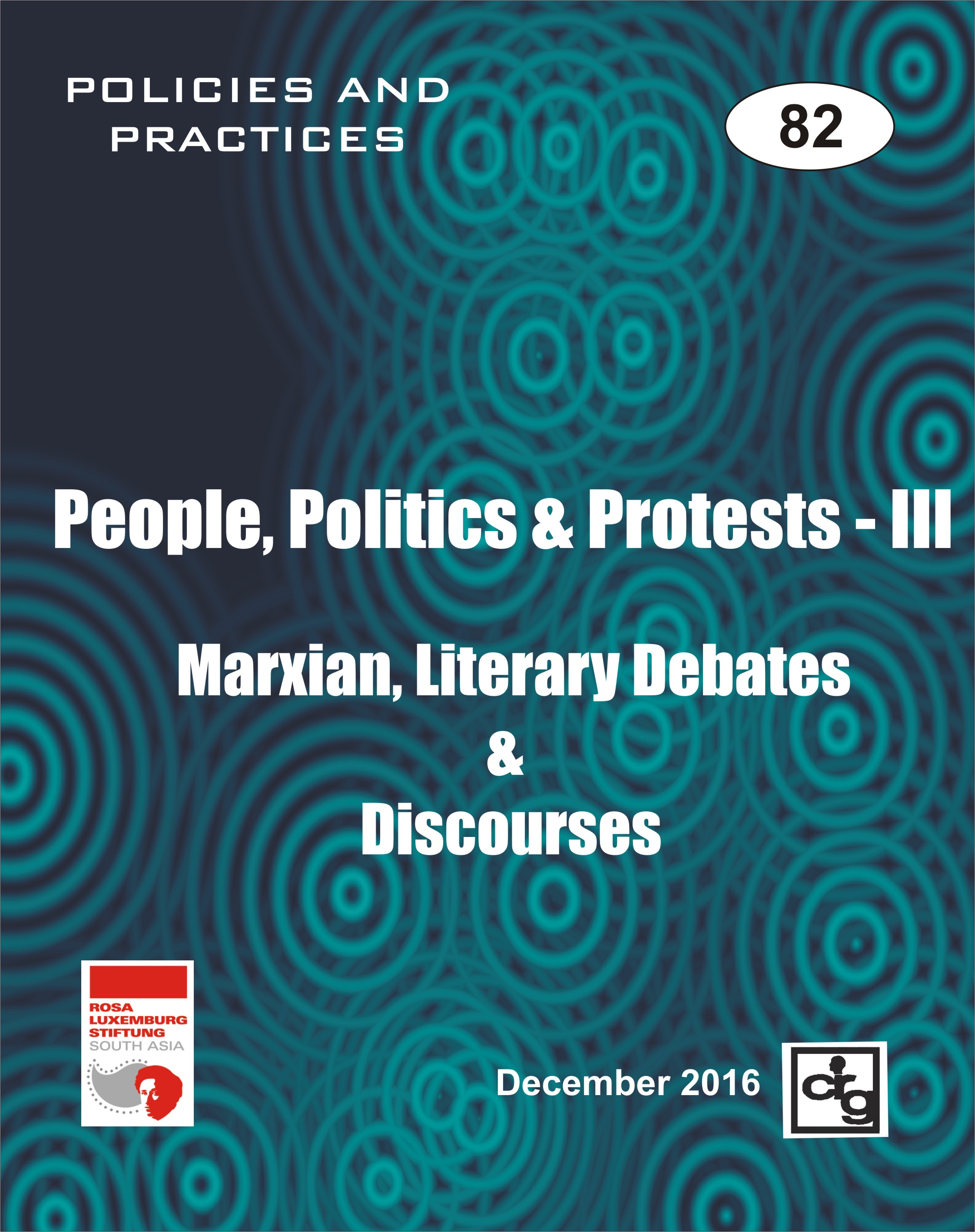 |
| |
|
|
|
| |
Policies
and Practices 81
People,
Politics and Protests II : Bengal and Bihar
The Defining Moments of Left-Popular Politics in West Bengal: The
Food Movements of 1959 & 1966
- The paper elaborates on food scarcity in Bengal which had been a
continuous feature since 1940s. The famine of 1943 perhaps marked
the epoch of such crisis in colonial Bengal. But the situation did
not improve with independence, rather scarcity of food grains and
high prices became a constant point of criticism of the Congress
party in power. People were mobilized across the state in demand of
food and West Bengal witnessed to massive movements on this issue –
one in 1950 and the other in 1966. The effect of the Food Movements
in West Bengal was so intense that it changed the political
complexion and paved the way for Naxalbari, the next militant phase
of political movements in West Bengal.
From Insurrection to Popular Movement : Bihar Movement, its
Possibilities and Limitations
- This paper has focused on the Bihar
Movement under Jayaprakash Narayan, popularly known as the JP
Movement. JP has been in
equal measure celebrated for its stand against a repressive state
and vilified for its lack of coherence in ideology, strategy and
tactics and even a positive political programme. The paper
demonstrated that Bihar Movement was an event that reflected all the
contradictions of contemporary times and by rearranging those
contradictions changed the structure of democratic politics in
India. It also noted the need to reappraise the role of JP. There is
a long held belief of JP being a confused popular leader, but the
paper has showed him as a tactical leader who always came up with
contingent ideas as a response to the events of the popular
movement.
Essays by
Sibaji Pratim Basu and
Mithilesh Kumar
|
|
 |
| |
|
|
|
| |
Policies
and Practices 80
People, Politics and Protests I
: Calcutta and West Bengal, 1950s - 1960s
‘Refugee Movement: Another Aspect of Popular Movements in West
Bengal in the 1950s and 1960s’ -
The paper on refugee politics in West Bengal in 1950s discussed in
details how refugees became central to the left politics of the
state. The refugees did not see themselves as refugees waiting for
government’s charity. They saw relief and rehabilitation as their
rights as citizens. Their fight for their rights was led by various
left parties. The paper studied the role of various Left parties
including CPI, RCPI, PSP, BPI in mobilizing the refugees staying in
camps and colonies. While studying refugee politics in West Bengal,
it highlighted the heterogeneous character of this group along the
lines of class and caste.
‘Tram Movement and Teachers’ Movement in Calcutta: 1953-1954’
-
The research on the tram and teachers’ movements complemented the
research on refugees in many ways. When the refugees took to the
street under the leadership of UCRC in demand for rehabilitation,
the students and labourers came out in large numbers in their
support, turning their movement into a “popular” one. The refugees
reciprocated by participating in large numbers in two great urban
movements of ‘50s, namely the tram movement against a decision to
increase the second class tram fare and teachers’ movement demanding
a pay hike for the secondary school teachers. The Tram Movement and
the Teachers’ Movement were extremely violent yet they witnessed
massive support from the residents of Calcutta. The movements
revealed the discontent among the common people. This would be
manifested further during the food movements towards late 1950s and
1960s.
Essays by
Sucharita Sengupta, Paula Banerjee and
Anwesha Sengupta
|
|
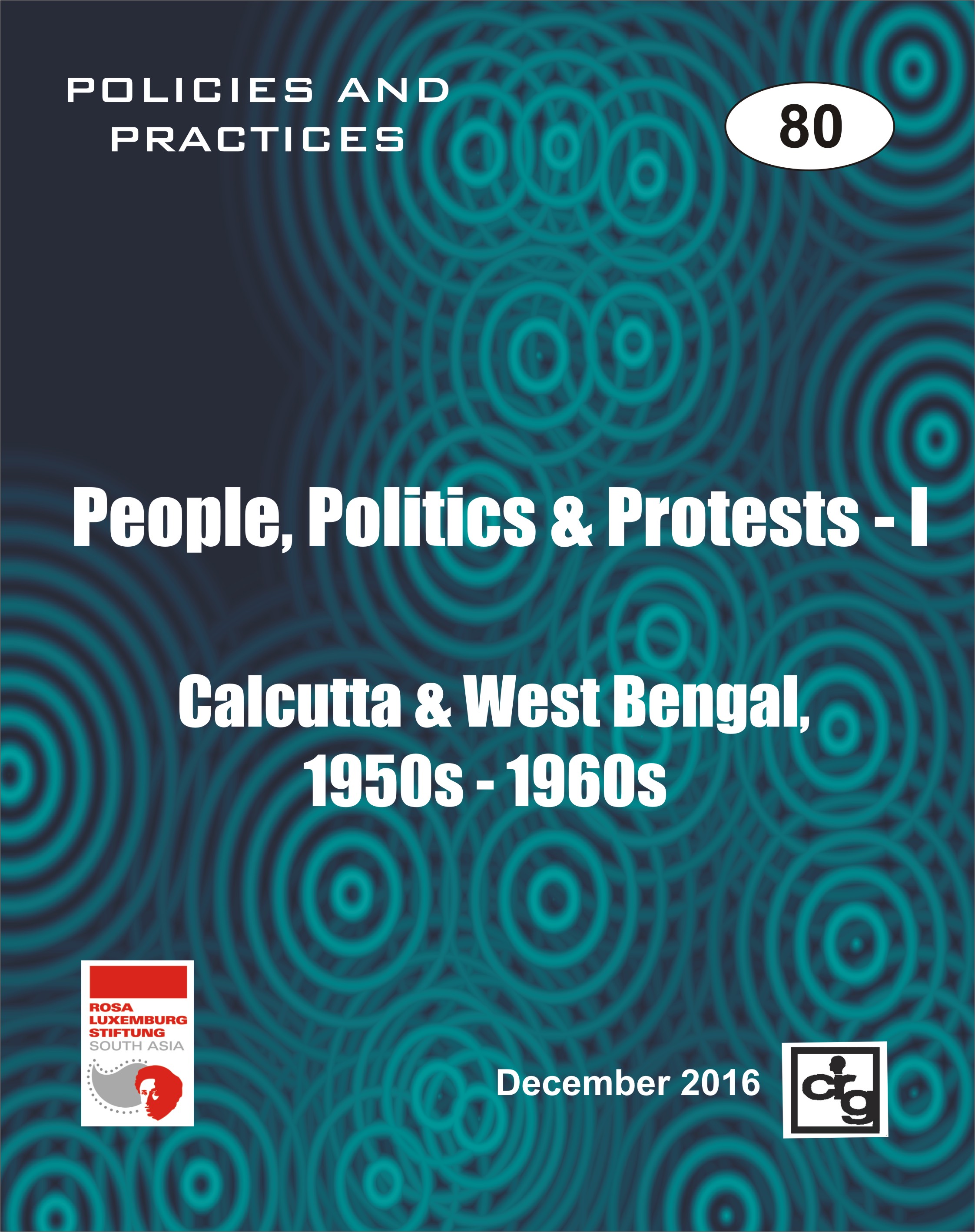 |
| |
|
|
|
| |
Policies
and Practices 79
Logistical Spaces IV: The Asia
Paradigm
Logistical Spaces: Connectivity as the New Asian Paradigm:
The fifth segment made a comprehensive assessment of India’s
logistic visions to the East and the West in the light of other
competing logistic visions, the One Belt One Road but also the US
strategy of Pivot of Asia and Russian Eurasian visions. It
questioned whether a logistical vision on India’s East can be
realized to any appreciable extent without a complementary design on
India’s west and northwest.
Essay by
Anita
Sengupta
|
|
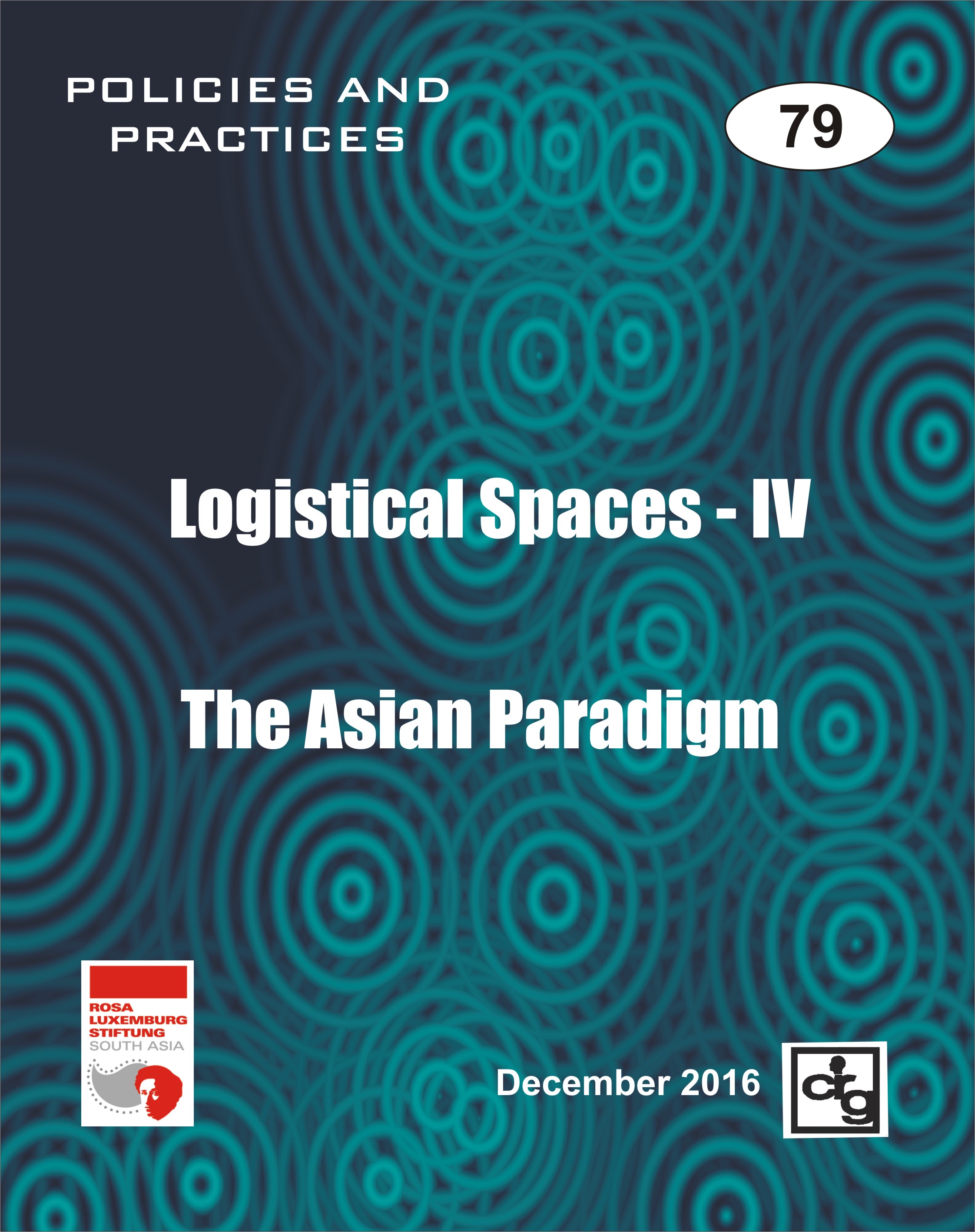 |
| |
|
|
|
| |
Policies
and Practices 78
Logistical
Spaces III :
Hubs, Connectivity and Transit
Bangladesh: The Key to India’s Look East
The third segment questioned whether logistic questions in the East
can be resolved without addressing various issues like that of
Kolkata Port with two ports under its management; achieving synergy
between Kolkata and Chittagong Ports; the logistics of water
sharing, security cooperation, land corridor of Bangladesh with
Nepal, reviving earlier inland water navigation routes as also
stabilizing relations with Burma and China independent of US
strategic preference. It also examined the tortuous history of
settling the “Bengal question” as congealed in the “Chicken’s neck”
which must then necessarily engage with issues of immigration,
trafficking in goods, services, labour and sex, securitization, land
grab, and development of Siliguri as a hub.
Kolkata as a Logistic Hub with special reference to the port
The fourth segment examined ways in which Kolkata (with its location
as a port, railway, and road hub) could become crucial for the new
logistical vision and how the existence of Bangladesh as a
disruption in India’s land continuity predicates the possibilities
of Kolkata as a logistical centre. Being one of the most populated
and economically developed cities in India, Kolkata possesses a
unique advantage as regards realization of the Look East Policy and
the paper examines this advantage along three interlinked axes:
history, infrastructure and location.
Essays by
Subir Bhaumik, Iman Kumar Mitra and
Mithilesh Kumar
|
|
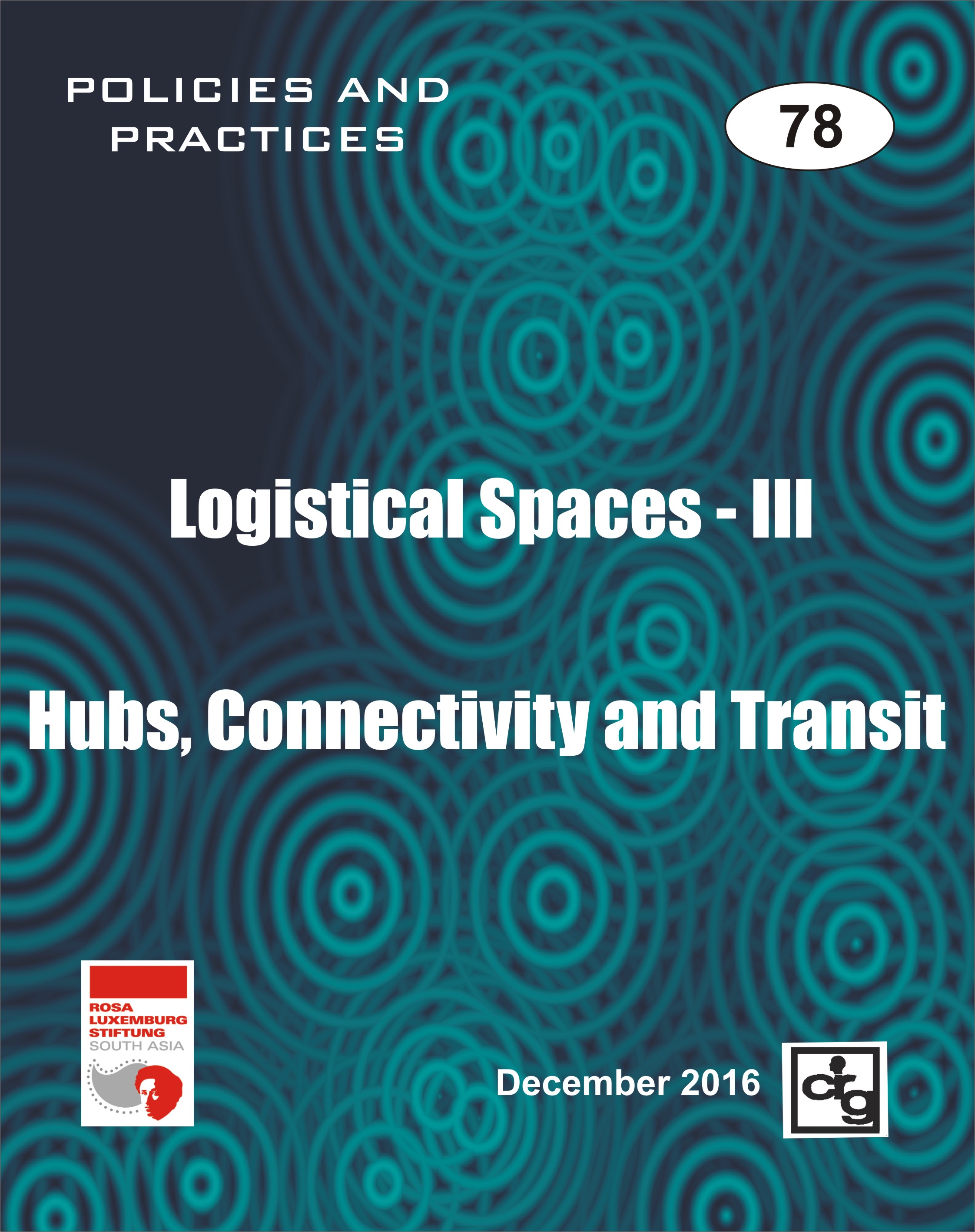 |
| |
|
|
|
| |
Policies
and Practices 77
Logistical Spaces II :
Mobilities and Spaces
Borders, Mobility and Migration: India’s Northeast
The second segment complimented the first and looked at migration,
displacement, insurgency and labour produced as a result of the
above mentioned vision of logistical governance. It addressed what
happens to population flow and control over resources within the
context of the Look East/Act East Policy heralded asbeing
transformative for the region. While deregulation of borders leads
to a barrier free integration of regions through trade and
communication, there remains the need to investigate whether the
same holds for movement of people particularly movements that fall
outside the purview of law. How do conflicts surrounding ‘outsiders’
or ‘alien bodies’ unfold? Similarly what is the complex relation
between the inflow of capital and outflow of labour?
Essays by
Sucharita Sengupta and
Samir
Purkayastha
|
|
 |
| |
|
|
|
| |
Policies
and Practices 76
Logistical
Spaces I:
Logistics and Social Governance
Bridge of Spaces: East by Rear East, Ah! The Northeast-
The first segment investigated components of the logistic visions
and infrastructural developments related to India’s Look East policy
in terms of its connect to the Northeast.It argued that it is in
the larger story of extraction of resources, logistical vision, and
infrastructural (material and social) programmes under postcolonial
capitalism and its interface with the neoliberal mode of governance
that one finds clues to how spaces are bridged and in the process
acquire new identities. Yet, and as consequence of this, the paper
seeks to suggest, there will be areas and hence spaces excluded from
this bridging operation waiting for future logistical operation.
Essays by
Ranabir Samaddar and Snehashish Mitra
|
|
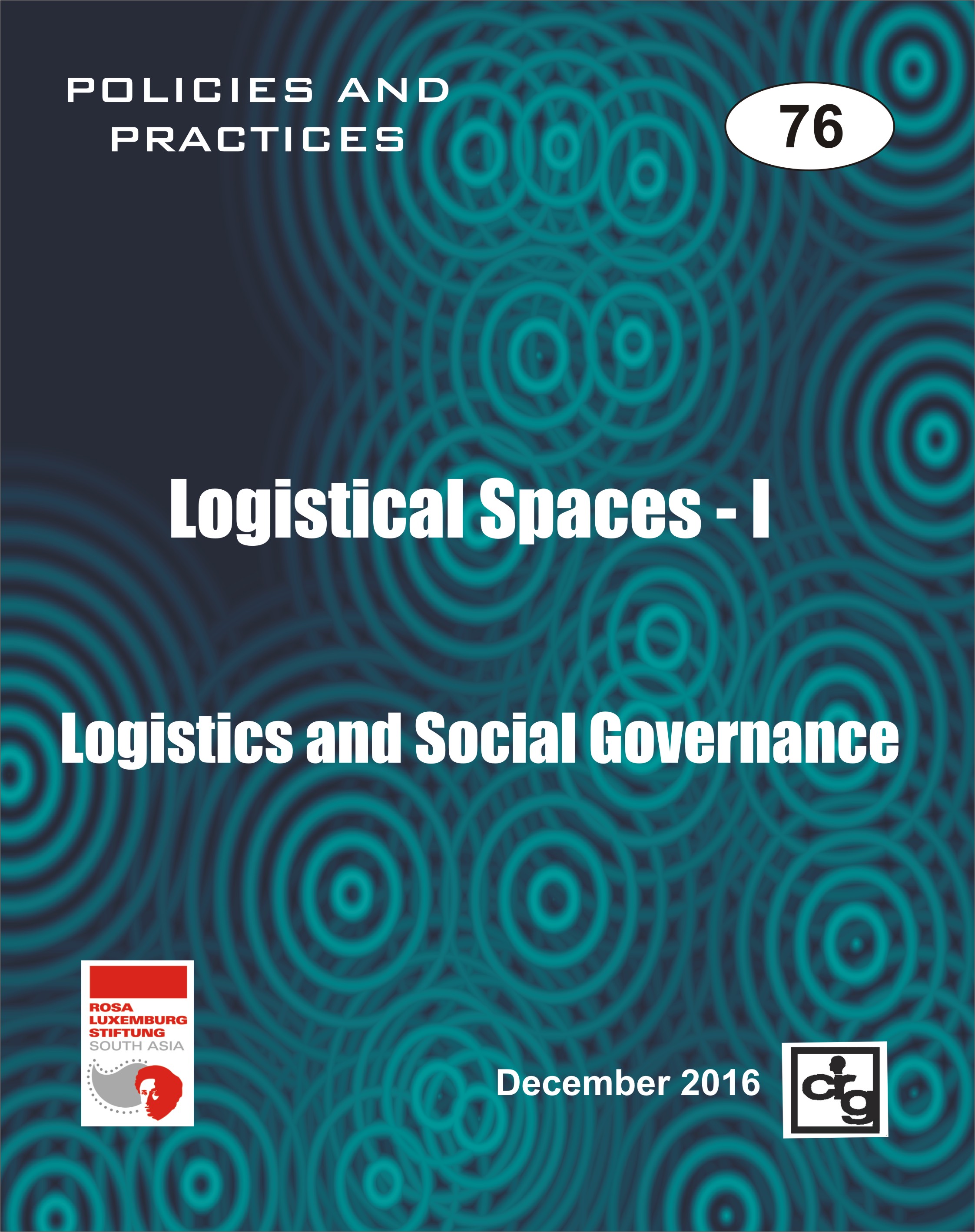 |
| |
|
|
|
| |
Policies
and Practices 75
Classes,
People, and Populism
Essay by Ranabir
Samaddar |
|
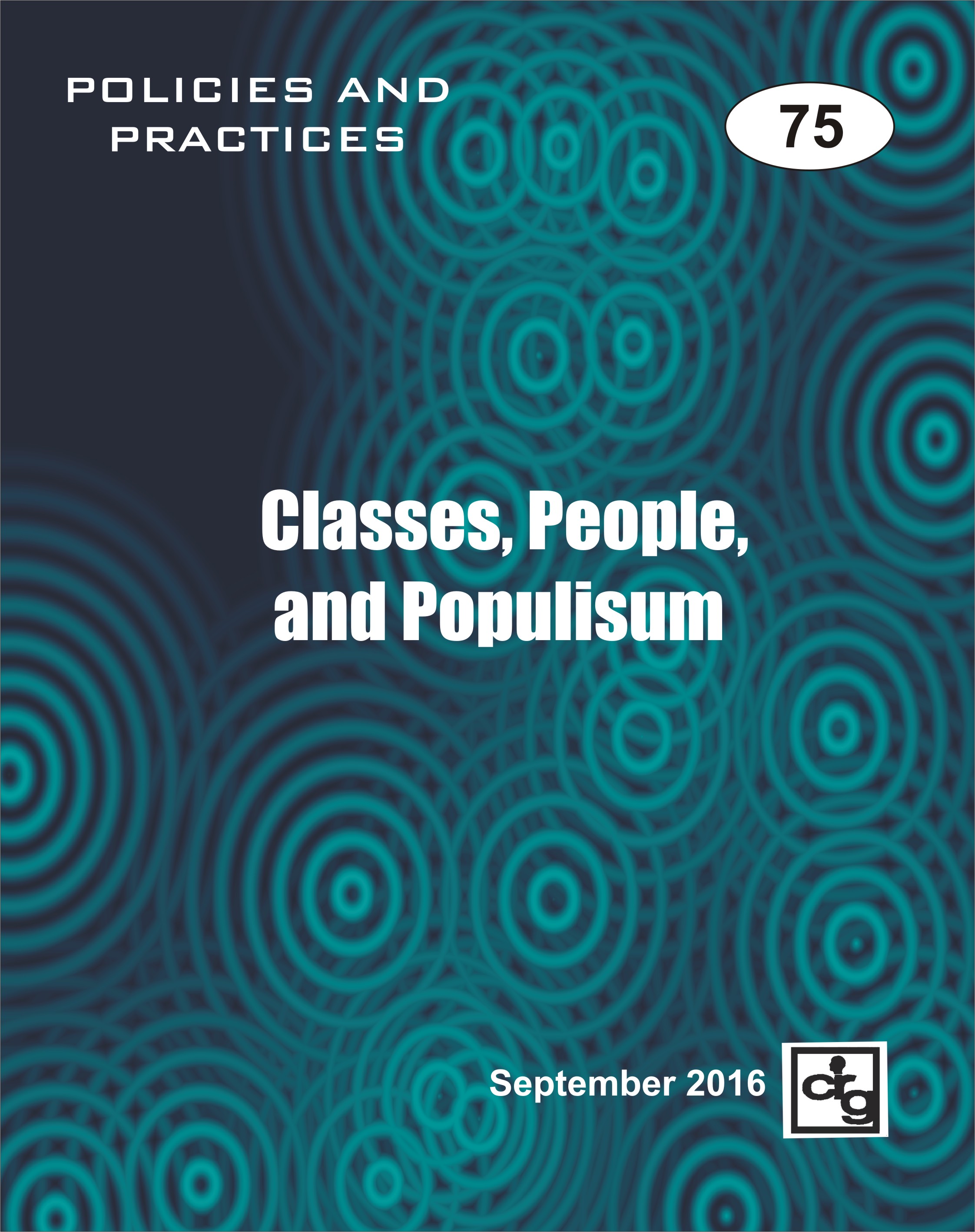 |
| |
|
|
|
| |
Policies
and Practices 74
Cities,
Rural Migrants and the Urban Poor-III : Migration and the Urban
Question in Delhi
Amit
Prakash: This essay
examines the ideational premises behind the extant policy
and legal framework for governing the National Capital
Territory (NCT) of Delhi. This focus of analysis, he argues,
attains greater salience with respect to the NCT on account
of its peculiar location in the constitutional scheme
wherein it is both a Union Territory and a State leading to
powers and functions being fractured across multiple
agencies and competencies.
Mithilesh
Kumar:The author,
in his chapter, discusses the concept of ‘primitive
accumulation’ in writings of various earlier thinkers and
academics and posits his understanding of the same concept
at the heart of the violent processes of land grabbing,
displacement and shifting of identity of settlers and
workers near and around the Airport City of Delhi.
Ishita Dey:
The essay offers an anthropological account of migrants in a
service village in the city of Delhi. The chapter is based
on her field-work in several intermittent phases in three
sites: Gurgaon, Gautampuri Resettlement Colony in New Delhi
and a dera in Faridabad.
Essays by
Amit Prakash, Mithilesh Kumar, Ishita Dey
|
|
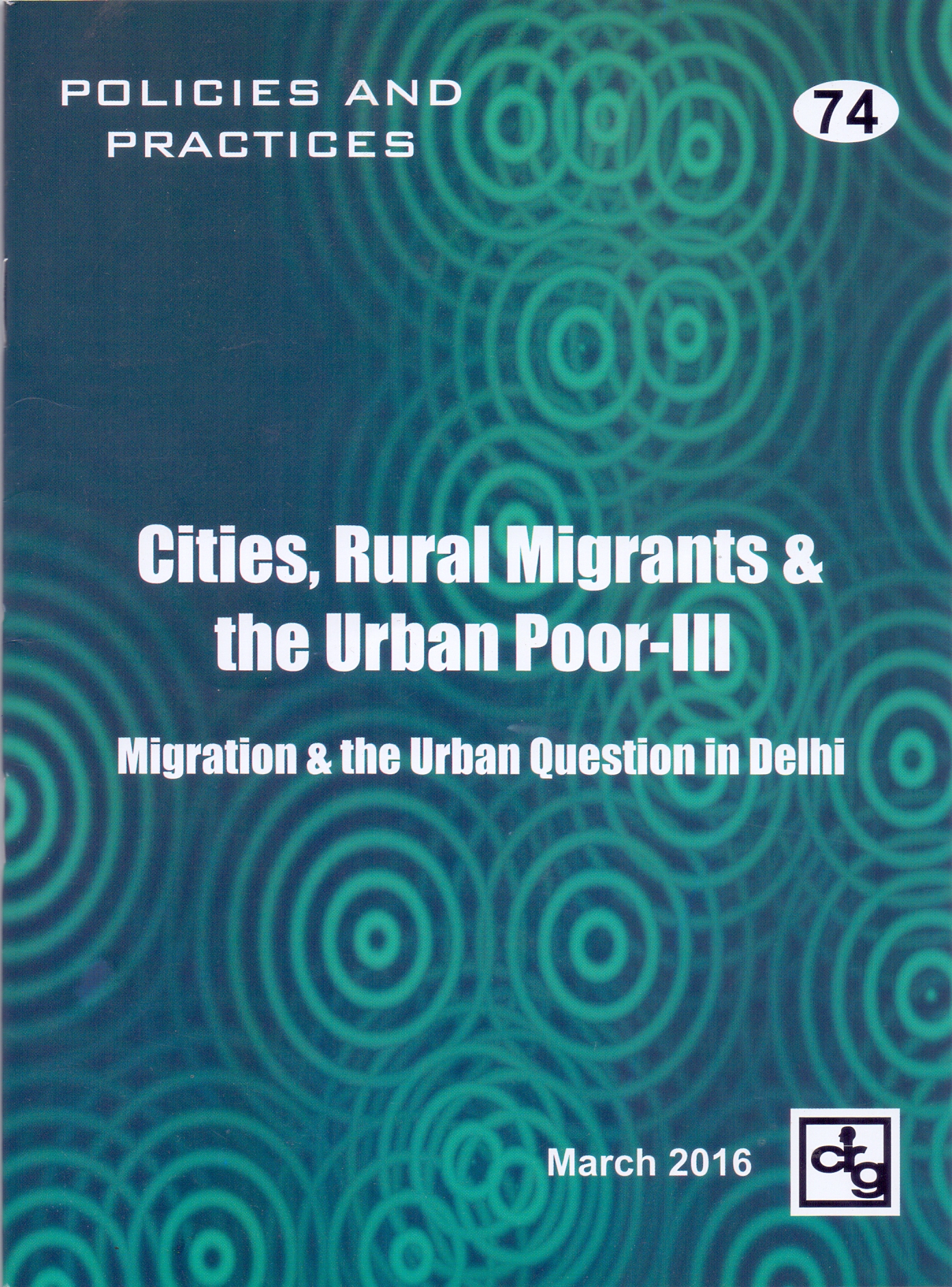 |
| |
|
|
|









